Being one of the early Flutter adopters in the industry, we have helped hundreds of clients with Flutter app development. We have helped them make cross-platform app development choices and often acknowledged the importance of flutter app development.
However, we sense that there is still ambiguity when it comes to Flutter state management. Hence, we felt the need to write a blog that explains to the audience, “what is state management”, and “how does Flutter deal with state management”? And many more. Well, even after reading the blog, if you still feel the need to connect and ask questions, do not hesitate to call us. We are open to any discussion about flutter app development.
Flutter is more than just a cross-platform framework. It is all about widgets; also, it is declarative, flexible, and expressive. Flutter is well-known for its native-like performance and is a modern solution much more in trend than ever before.
Moving forward with the main topic, Flutter state management.
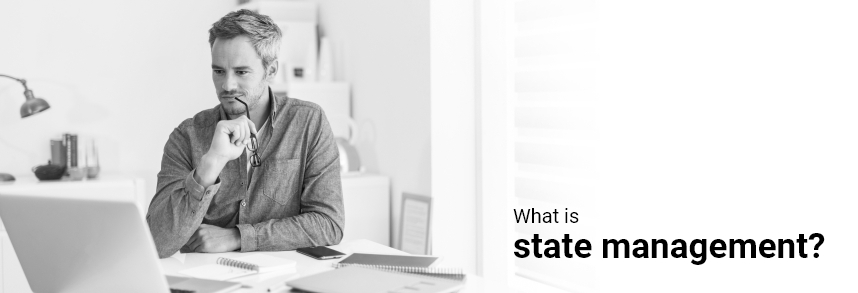
What is state management?
In simple words, the state is the information you need to rebuild the UI at any moment. It is important to manage the state during the entire lifecycle of application development.
Let us explain a state to you with a simple example of a shopping app:
A user logs into the application using their personal information.
This information should remain existential on all the screens when the user is onboard.
A user browses through various pages and keeps on adding products to the cart. The cart should remain with the saved products until the final checkout has been completed.
This persistence of information throughout the process is called the state of the application. Another example is that a welcome greeting should be visible only when the user opens the application for the first time. But, during the navigation to consecutive pages, it should not be visible. This is also a part of state management.
State management is applicable to any of the UI controls, be it text fields, radio buttons, navigation, checkboxes, or anything. And as you can see from the above examples, it is important for you to know what exactly to show on the screen and when.
You can address the following queries if you smartly manage the states.
01. What to reflect when the user refreshes the page.
02. How to handle data when the server runs an update.
03. How to address the request made to the server to fetch an update.
You can manage the state on both sides: frontend and backend.
Moving forward with state management.
State management with Flutter is handled differently. Instead of reflecting on the changes in the UI, Flutter rebuilds the UI from scratch. This means, whenever the application state changes, Flutter rebuilds the UI.
State management can be described in two different categories:
01. Ephemeral
02. App State
The ephemeral state doesn’t last long. It represents the local state of a widget, animation, or a single-page product.
Flutter handles this local state quite effectively because it is not complex and easy to understand. Flutter provides StatefulWidget and setState() methods to introduce ephemeral state.
App State :
App state exists along with the entire application right from the time when the user logs into the app, their information, preferences, social networking information, etc. All of these scenarios are a part of the app state. App state can be used globally, and it is also referred to as application state or shared state.
Depending on the application’s complexity and type, it is upon you to decide the Flutter state management technique. You can manage states by using State and setState().
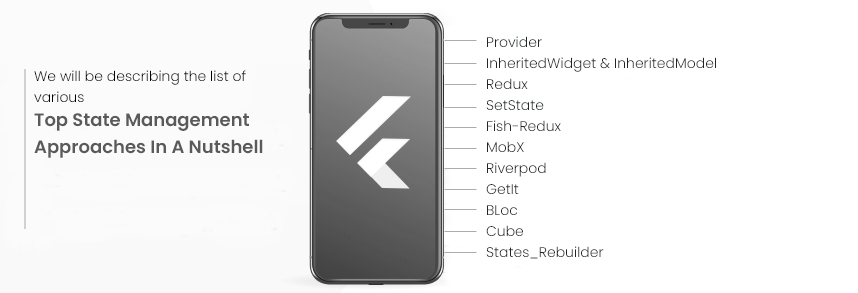
Moving forward
List of various Flutter state management approaches
Provider :
The Provider is an amalgamation of Dependency Injection and State Management. It revolves around InheritedWidgets but offers a lot on the plate. Provider makes InheritedWidget reusable and easy to use.
Provider makes very minimal use of code and was developed by Remi Rousselet. The provider is the most frequently used, often called the Least Common Denominator in all the Flutter apps.
InheritedWidget and InheritedModel :
InheritedWidget also known as the Flutter Monad is the base class of Flutter state management. You can also use the widget to pass data from upstream to downstream. A Widget falling in the same scenario (tree) can access the properties of InheritedWidget.
The diagram is easy to understand; however, it gets complex for large-size applications. It assists users in defining a particular data that they want and rebuilds the ones that follow.
Redux :
Redux was an early entrant in the list of Flutter state management. It helps in differentiating business logic and presentation logic by following a unidirectional data flow architecture.
Developers can swiftly introduce changes in the UI and easily detect bugs. Redux is preferred for large apps and synchronized solutions. Redux state management makes a state stable making it quite effortless for developers to find bugs.
setState :
setState is very easy to understand and effective local state management. It accurately handles the ephemeral state; however, it becomes tedious to maintain the setState that is scattered all over the place.
Fish-Redux :
Fish-Redux was first introduced by Alibaba Tech and is suitable for medium to large-sized applications. It also operates on a different layer than Redux does, and thereby, it streamlines the state management.
MobX :
MobX is a state management library consisting of Observables, Actions, and Reactions. The flow of these components is unidirectional and looks very effortless.
It works on the below principle:
Anything that can be derived from the application state should be. Automatically.
All the changes that are required to be induced in the UI are checked by this Flutter state management. The Actions are processed by the View layer and changed to Observables. Any changes made in this layer are detected, and the Reaction is sent to rebuild the UI. The circle gets completed, and the UI properties are changed if required.

Riverpod :
Riverpod acts exactly the same as Provider, however, it can solve the common problems that a provider has. It ensures higher performance, readability, and testability along with the unidirectional data flow. Riverpod state management doesn’t require you to depend on BuildContext, you can independently manage the state.
GetIt :
GetIt is optional state management for InheritedWidget or Provider. It is used to access objects, but it is not exactly a state management technique. GetIt allows you to differentiate the interface from the main implementation and concrete implementation.
BLoc
This library was developed to simplify coding and provide support for building high-performing applications with seamless testing options. It takes care of these requirements and lets you regulate when and how the state modifies throughout the app.
BLoc is one of the most famous Flutter state management libraries as it helps separate the presentation layer from business logic. Thereby, it makes the code easy to test and reusable across other applications or within the same.
Cube
Cube is the latest one in the list of Flutter state management libraries that uses dependency injection without requiring code generation. Being the newest project, limited Flutter users know about it. However, the approach is pretty simple to wrap your head around, even if you are new to Flutter. Moreover, it aims to simplify state management objectively, rebuilding the widget tree where necessary and minimizing code complexity.
States_Rebuilder
States_Rebuilder is one of the highly ranked Flutter state management libraries that focuses on accomplishing four targets: Better performance, Clean Code, User-friendly architecture, and Support for efficient production. It also works by separating the UI from business logic. States_Rebuilder has a built-in dependency injection system and supports immutable and mutable states. With a lightweight and elegant syntax, the state manager is also sufficient for user authorization and authentication.
Wrap up
So, yeah, this is all about the list of state management approaches. You can resort to a trustable, reliable, and experienced Flutter app development company in India for any further knowledge. You can also hire our Flutter app developers to commence with your next project. The evolving Flutter will have a lot to offer in the coming years. All the best!

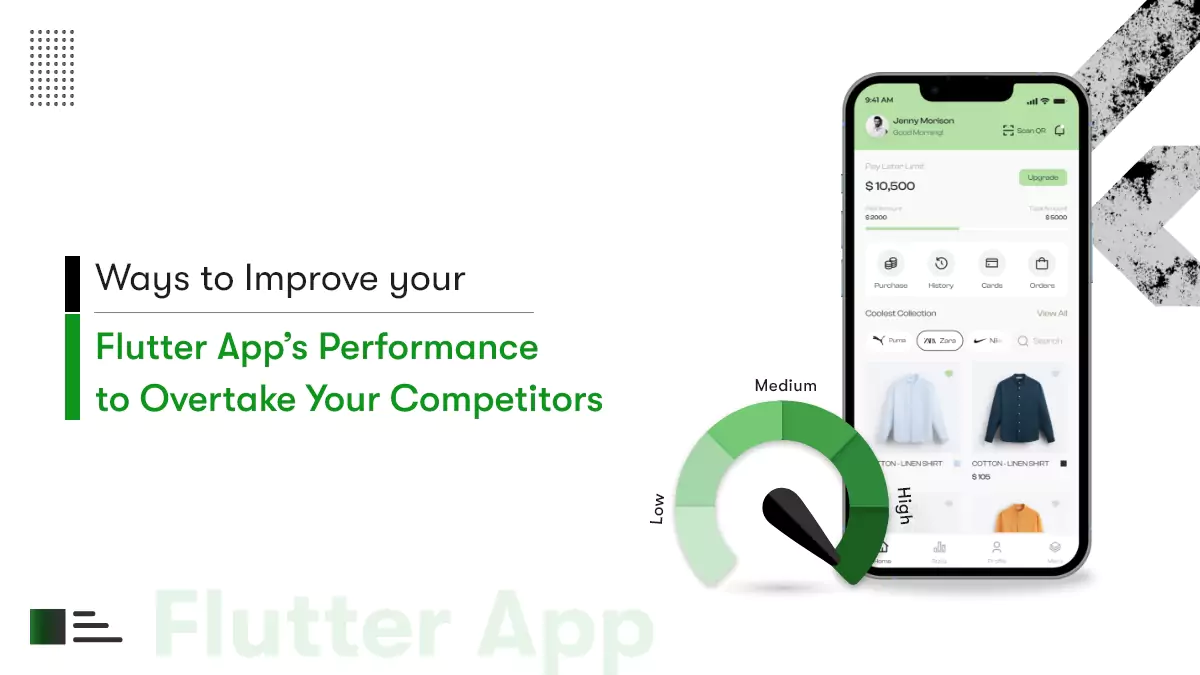
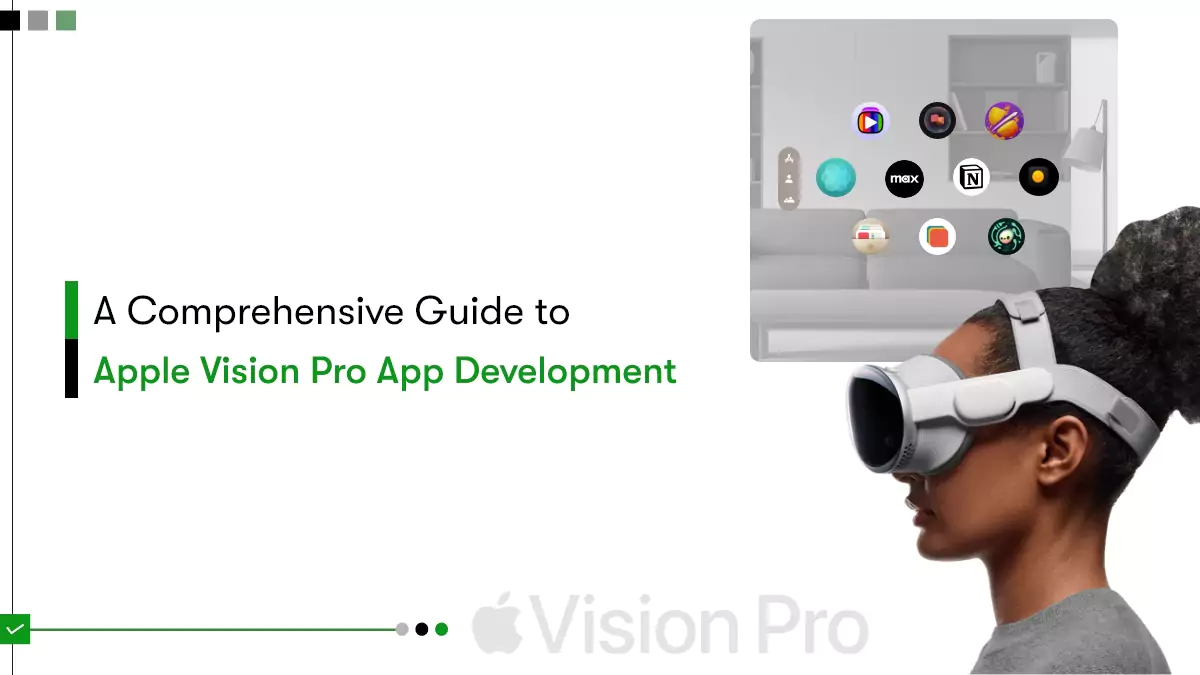
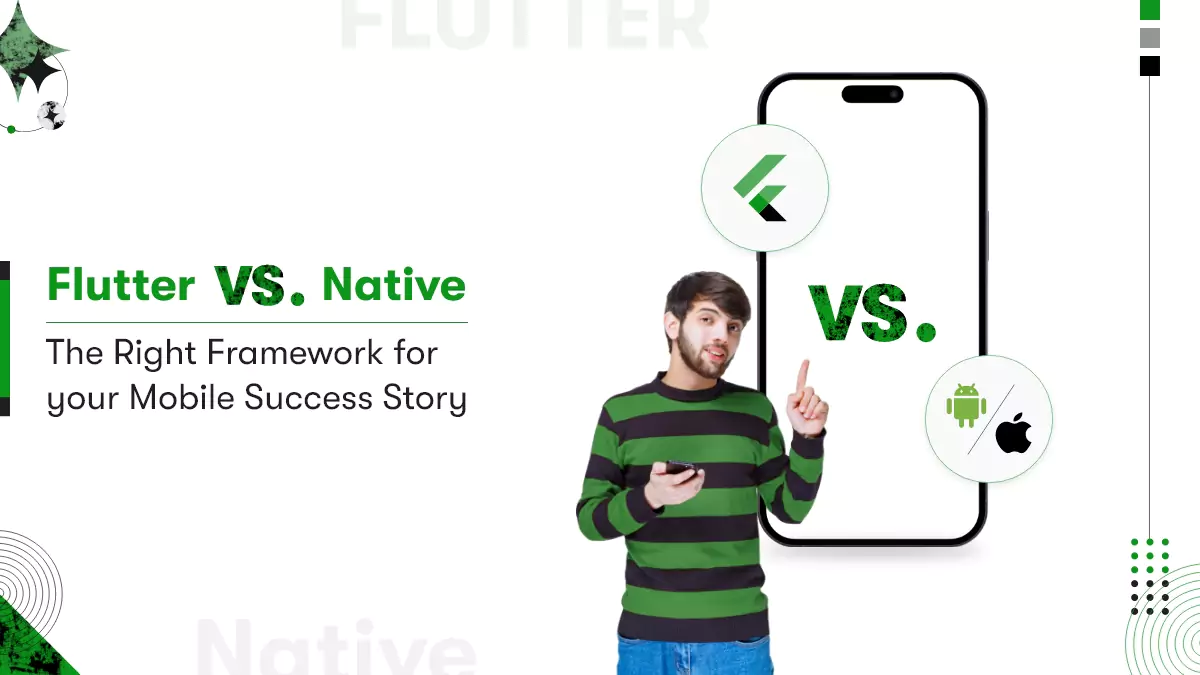
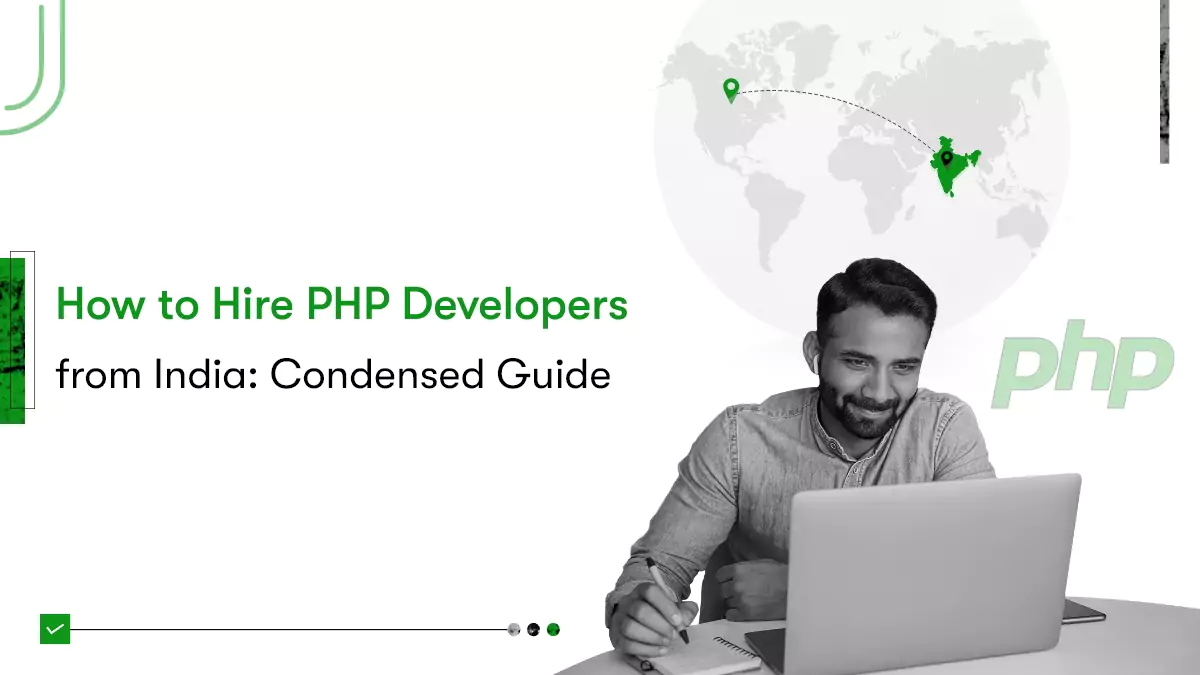
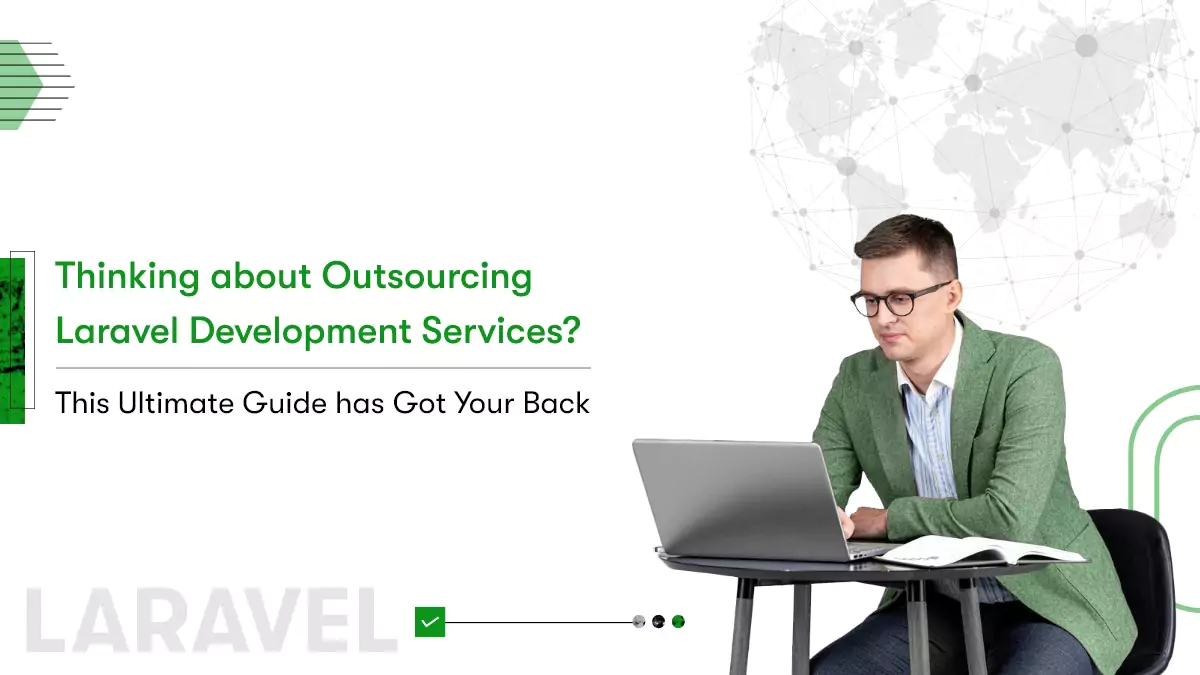





 Contact Information
Contact Information